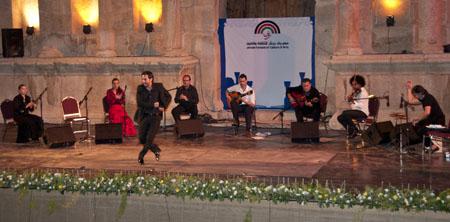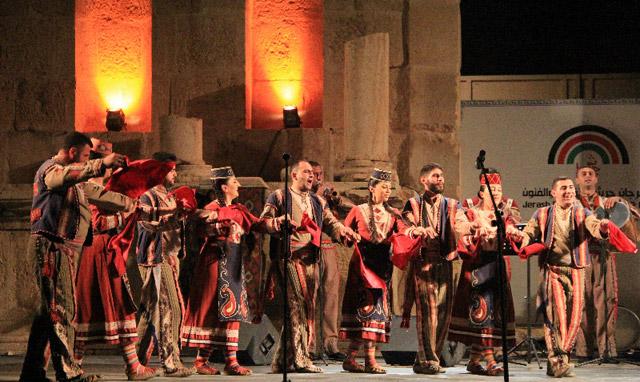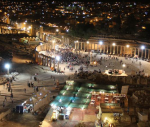You are here
Dancing queen
By Nickunj Malik - Jun 18,2014 - Last updated at Jun 18,2014
Dancing comes naturally to some people. This might seem like a sweeping statement, but folks of certain cultures in Africa and South America have an inbuilt rhythm. Even when they sway gently to a musical beat, they do it rhythmically.
The several hoards of Brazilians, boogying on the streets of their various cities, in the ongoing FIFA World Cup, are a case in point. It does not matter whether they are young or old, male or female, sober or inebriated. As soon as a tune is played, they just get up from whatever position they are sitting or reclining in, and start to dance. Their movements are so graceful that it is a joy to be even a mute spectator.
Every country, however, has its own unique style of dances. Some belong to the classical oeuvre while others are light and unsynchronised sorts. The traditional dances take years of training to perfect and selected dancers devote their entire lives to achieve this.
There is dancing that is done individually, as a pair, (that is, with a partner) and then there are group dances involving a multitude of individuals. All kinds of ballroom dancing need an escort because it takes two to tango. So, whether it is the Waltz, Foxtrot, Samba, Cha-cha-cha, Salsa or Flamenco, it is all danced with a companion.
My home country India has a great variety of colourful dances too, from the conventional to the modern. The Indian dances all vary as per the region they originate from and each have a distinct method of performance. The orthodox traditional ones represent a particular culture. The steps are based around a strict style and they also make the use of “Natya” or acting, to portray mythological or folklore stories.
But most of the world recognises us by our Bollywood dances. The Indian film industry makes movies that are all musicals, with lavish song and dance routines. People, who are unfamiliar with India and have only seen it portrayed on cinema, think all Indians, dressed in garish, over-the-top clothes and jewels, sing to each other all the time. And whenever there is a birth, wedding, festival or rainfall, we start dancing. Try as I might to ignore it, the minute my nationality is discovered in an alien land, I am expected to dance a few steps to any song that a foreigner might remember, from one of our countless films.
Belly dancing, a type of Oriental dance that involves vigorous torso movements has always fascinated me. Everything about this particular dance form is captivating, from the sensual costume to the stimulating steps. Contrary to its name, the emphasis during this dance is not so much on the abdomen as it is on the hips. Correct posture and muscle control is absolutely essential to perform the intricate moves.
Last week I gave in to my curiosity and attended a belly dancing class. The instructor was a stunning looking Jordanian woman who was effortlessly demonstrating the complicated steps.
“Yallah! Move your hips in a figure eight loop,” she scolded me
“I’m sorry I am from India,” I blurted out
“Al Hind? Aha, Katrina Kaif?” she exclaimed
“Yes, she is a top Indian actress,” I smiled
“You know the Mashallah song?” she asked, wriggling her back
“No,” I lied.
“Why not? Come to the front of the class and teach us,” she ordered
“Mashallah Mashallah,” I gritted my teeth, and danced to the best of my ability.
Related Articles
PARIS — The drummers puff out their chests, let out a guttural yell, then step up to their kits and furiously pound out their signatur
It was first class, genuine flamenco Saturday night at Jerash’s North Theatre. Spanish guitarist extraordinaire Carlos Piñana and his group performed brilliantly, mixing guitar, song and of course flamenco dances.
JERASH — Jordanian Armenians on Wednesday enjoyed songs and dances from their ancestral homeland at Jerash’s northern theatre.Coming from Ar



















